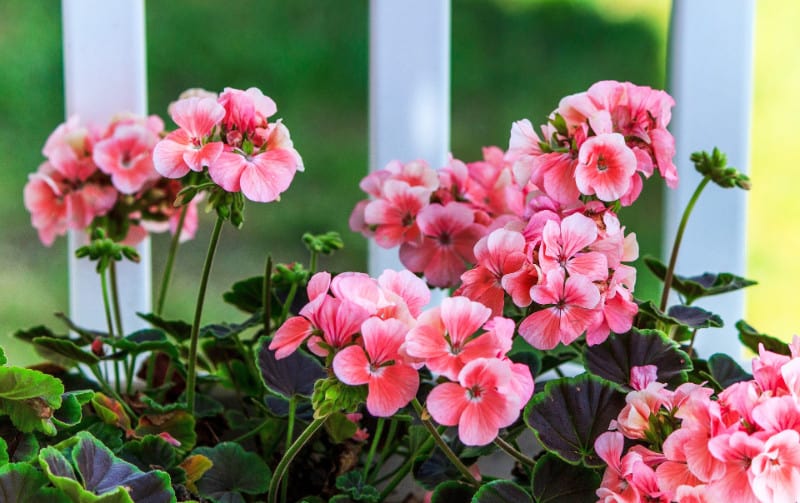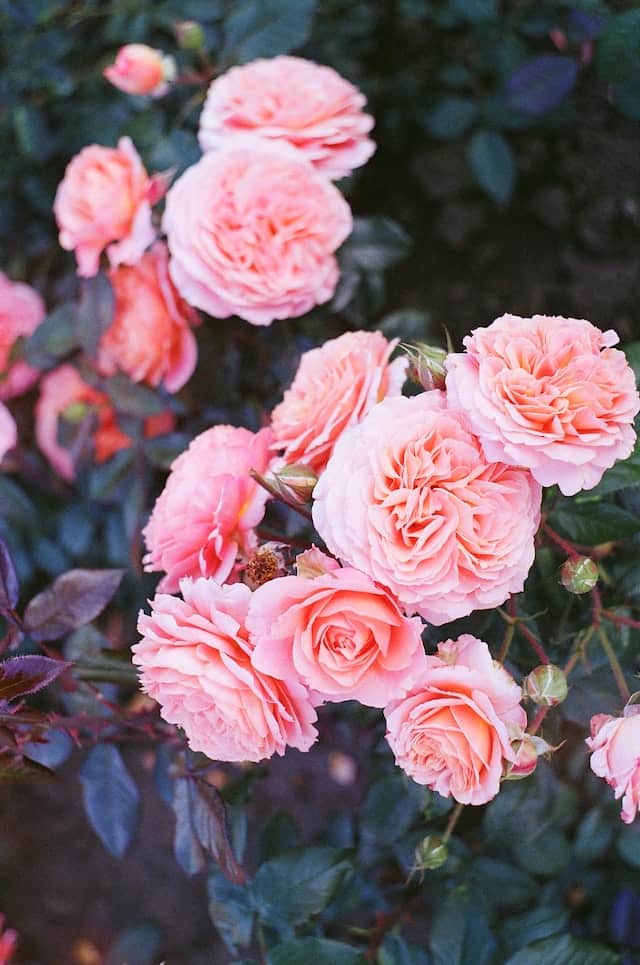January is an exciting time for gardeners in USDA Hardiness Zone 9, as the mild winter climate provides an excellent opportunity to kick-start the growing season.
With temperatures rarely dropping to freezing, many vibrant flowers can be planted this month, adding color and beauty to your garden.
Here’s an in-depth look at some perfect flowers to sow or transplant in January in Zone 9, ensuring a flourishing, colorful display as the spring approaches.
Petunias

Petunias are a delightful choice for gardeners looking to add vibrant colors to their gardens. In Zone 9, January is an ideal month to start petunias from seeds indoors or to transplant established seedlings outside. These flowers thrive in well-draining soil with a slightly acidic pH. Known for their vast array of colors and patterns, petunias can be used in borders, containers, or hanging baskets. Regular deadheading will encourage continuous blooming, making them a stunning addition to your winter landscape.
Snapdragons

One of the cooler-season favorites, snapdragons bring vertical interest and a unique texture to any garden. In January, starting snapdragon seeds indoors helps the plants establish a solid root system before being transplanted outdoors. These flowers prefer full sun and can tolerate cooler temperatures well, blooming in a range of colors including pink, red, and white. Tall varieties of snapdragons can create a striking backdrop in flower beds or can be planted in clusters for a dramatic effect. They are also known to attract pollinators like bees and butterflies.
Primroses

Primroses are charming perennial flowers that bloom in early spring, making January a great time to plant them in Zone 9. Their soft, pastel colors add a delightful touch to gardens, and they thrive in well-drained soil enriched with organic matter. Primroses prefer partial shade and are perfect for gardens with dappled light. Planting them this month will give them time to establish, ensuring a beautiful display of flowers as early as February. They are also relatively low-maintenance, requiring basic care to thrive.
Dianthus

With their clove-like scent and bright flowers, dianthus is an excellent choice for gardens in January. This hardy perennial enjoys full sun and prefers well-drained soil. Planting seedlings or sowing seeds directly will give you a stunning array of pinks, whites, and reds. Dianthus bloom in the spring and exhibit a charming frilled petal structure, adding texture to flower beds or containers. Additionally, they are drought-tolerant once established, making them a practical choice for low-water gardens.
Sweet Peas

Sweet peas are a classic garden flower, renowned for their fragrance and delicate blooms. January is the perfect time to sow these seeds directly into the soil in Zone 9. They prefer cool weather, thriving in temperatures between 50 to 70 degrees Fahrenheit. Sweet peas require a trellis for climbing, which makes them a lovely addition to fences and garden entrances. As they bloom in spring, the enchanting scent and colorful flowers they produce will create an inviting atmosphere in your garden.
Nasturtiums

Nasturtiums are not only visually appealing but also edible, making them a unique addition to any garden. January allows gardeners in Zone 9 to plant these seeds directly into the ground. Their vibrant flowers — which can be shades of orange, yellow, and red — and lush green leaves create a picturesque landscape. Nasturtiums thrive in poor soil and full sun, and they are also known to attract beneficial insects, like aphid-eating ladybugs. Their peppery flavor makes them popular for salads and garnishes, adding a delightful touch to your homegrown dishes.
Zinnias

Zinnias are a summer favorite that can be started indoors in January for a jumpstart on the growing season. They are known for their bright colors and sturdy constitution, thriving in full sun and well-drained soil. Zinnias come in various heights and sizes, making them versatile for any garden space. Once transplanted in spring, they will bloom profusely throughout the warmer months, providing a long-lasting display of colors. They’re also beloved by pollinators, making them beneficial for attracting butterflies and bees.
Marigolds

For bright, cheerful blooms, marigolds are a perfect choice. Planting them in January allows them to establish themselves before the warmer months. Marigolds are incredibly resilient, tolerating poor soil and a range of temperatures. Their bright yellows, oranges, and reds not only bring color to the garden but also serve as natural pest deterrents, repelling aphids and nematodes. Plant marigolds throughout your garden beds, or in containers, for easy access to their delightful blooms.
Sunflowers

Although traditionally thought of as a summer flower, sunflowers can be started indoors in January to be ready for outdoor planting in early spring. Their towering stature and large, cheerful flowers bring a sense of wonder and nostalgia to any garden setting. Sunflower seeds germinate quickly and are relatively easy to grow, thriving in full sun and well-draining soil. As they mature, these flowers attract numerous pollinators, making them a valuable addition to your garden ecosystem.
Cosmos

Cosmos flowers are known for their graceful shapes and vibrant colors that bloom from summer to fall. Start seeds indoors in January for an early start in Zone 9. They are adaptable and can flourish in poor soil, making them an ideal choice for gardeners looking for low-maintenance blooms. Cosmos love full sun and can withstand some drought, producing delicate flowers in pink, white, and orange hues. Their airy appearance makes them perfect for adding depth to flower beds and providing a whimsical feel to floral arrangements.
Azaleas

Azaleas are a popular choice in Zone 9 gardens, known for their stunning clusters of flowers and evergreen foliage. January is an ideal time to plant azaleas, as they will have the chance to establish a strong root system before the warmer weather arrives. These shrubs thrive in partial shade and prefer well-drained, acidic soil. Azaleas bloom predominantly in spring, showcasing an array of colors, from soft pastels to vibrant hues. Their beautiful blossoms attract pollinators, and their lush green leaves provide year-round interest, making them a must-have in any landscape.
Camellias

For those looking to brighten up their winter garden, camellias offer exquisite flowers that bloom in the cool months. Planting camellias in January ensures that they will have plenty of time to establish before the warmer spring months. These evergreen shrubs prefer partial to full shade and thrive in rich, well-drained soil. Known for their large, showy blooms, camellias come in a variety of colors including white, pink, and red. Their early blooms not only add color during the winter months but also provide a vital food source for pollinators when other flowers are scarce.
Daffodils

Daffodils are one of spring’s earliest bloomers, known for their cheerful yellow trumpet-shaped flowers. January is an excellent time to plant daffodil bulbs in Zone 9. They thrive in well-drained soil and prefer full sun to part shade. The key to successful daffodil planting is ensuring that the bulbs are placed at the correct depth; generally, three times the height of the bulb. Once established, daffodils will naturalize and multiply year after year, creating a delightful display of color in your spring garden.
Forsythia

Forsythia is a deciduous shrub that heralds the arrival of spring with its vibrant yellow flowers. While typically known for planting in the fall, January is a great time to transplant established forsythia in Zone 9. These hardy shrubs prefer full sun and well-drained soil and can tolerate a range of soil types. Forsythia blooms early in the season, providing a burst of color that brightens up an otherwise drab winter landscape. Its arching branches are also wonderful for creating informal hedges and borders.
Hibiscus

For those looking to add tropical flair to their gardens, hibiscus is an excellent choice. Although typically planted in spring, starting hibiscus seeds indoors in January can give you a head start on the blooming season. These perennial plants thrive in full sun and love well-draining, rich soil. With their large, vibrant flowers that bloom throughout the summer, hibiscus plants make a show-stopping addition to any garden. They attract hummingbirds and butterflies, further enhancing the garden’s biodiversity.
Hydrangeas

Hydrangeas are a classic garden favorite known for their big, beautiful flowers that come in a variety of colors. January is an ideal time to plant hydrangeas in Zone 9, as they can be planted bare-root or potted. These lovely shrubs prefer partial shade and well-drained soil enriched with organic matter. Hydrangeas can change color based on soil pH; alkaline soils will yield pink blooms, while acidic soils provide blue flowers. With their elegant appearance, hydrangeas make a stunning addition to any flower bed or garden border.
Impatiens

Impatiens are a beloved shade-loving annual flower that brings a vibrant pop of color to gardens and containers. January is perfect for starting impatiens seeds indoors to transplant later in the spring. These flowers thrive in rich, well-drained soil and prefer moist conditions. Impatiens come in a wide range of colors, making them versatile for various garden designs. Once they bloom, their cheerful colors can transform shady spots into lively areas of interest, creating a warm and inviting atmosphere.
Lantanas

Lantanas are hardy flowering plants that thrive in heat and tolerate drought, making them an excellent choice for gardeners in Zone 9. While commonly planted in spring, starting lantana seeds indoors in January can yield impressive blooms during the summer months. Lantanas prefer full sun and well-draining soil. Their clusters of small flowers come in a variety of colors, from yellows and oranges to reds and purples. Lantanas are also known to attract butterflies, adding an additional layer of beauty and activity to your garden.
Lilies

Lilies are stunning, fragrant flowers that can add elegance to any garden. January is a great time to plant lily bulbs in Zone 9, especially varieties like Asiatic and Oriental lilies. They thrive in full sun and prefer well-drained soil enriched with organic matter. Planting in January allows lilies to establish roots before the heat of summer, leading to a robust display of blooms. With a wide variety of colors and patterns, lilies make a spectacular addition to flower beds, borders, or as cut flowers in arrangements.
Asters

Asters are a perennial favorite, renowned for their vibrant daisy-like blooms that add a splash of color to gardens in late summer and early fall. January is an optimal time to start aster seeds indoors, as they require a bit of time to germinate before being transplanted outdoors in spring. Asters thrive in well-drained soil and prefer full sun, though they can tolerate partial shade. These flowers come in various colors, including purple, pink, and white, attracting butterflies and beneficial insects to your garden. With proper care, aster plants can reach impressive heights, providing a stunning backdrop for your other garden favorites.
Begonias

Begonias are excellent choices for shaded areas in your garden, and starting them indoors in January ensures plenty of time for growth. Known for their ornamental foliage and vibrant flowers, these plants thrive in rich, well-draining soil and prefer filtered sunlight. Begonias come in various forms, including tuberous and fibrous-rooted types. Their delightful blossoms range in color from soft pastels to bold reds, making them perfect for containers, hanging baskets, or garden beds. With regular watering and attention, begonias will reward you with a beautiful, lush display.
Chrysanthemums

Chrysanthemums, commonly known as mums, are iconic fall flowers renowned for their bold colors and diverse forms. Although primarily planted in spring, starting chrysanthemums indoors in January can provide a jumpstart on the growing season. They thrive in full sun and well-drained soil, and by planting them early, you can enjoy their stunning blooms come late summer and fall. Mums are versatile and can be used in flower beds, borders, or pots, adding layers of color and texture. Additionally, their ability to attract pollinators makes them a valuable addition to your garden ecosystem.
Daisies

Daisies are cheerful, perennial flowers that symbolize purity and innocence. Planting daisies in January allows them to establish their root systems before spring arrives. These hardy flowers thrive in well-drained soil and prefer full sun to partial shade. The classic white petals with golden centers enhance various landscapes, from cottage gardens to modern spaces. Daisies are also known for attracting a variety of pollinators, making them a great choice for fostering biodiversity in your garden. Given the correct conditions, daisies will bloom from spring to fall, providing an extended display of color.
Geraniums

Geraniums are a staple in gardens, celebrated for their resilience and beautiful clusters of blooms. January is an excellent time to start geranium seeds indoors, allowing for early growth before the planting season begins. These plants thrive in well-drained soil and prefer full sun to partial shade. Geraniums come in an array of colors, including reds, pinks, and whites, and their fragrant foliage makes them attractive to gardeners and pollinators alike. With regular watering and deadheading, geraniums can provide a continuous display of blooms throughout the warmer months.
Larkspur

Larkspur is a stunning annual that can add height and drama to any garden. Planting larkspur seeds directly in the ground in January is beneficial, especially since they prefer cooler weather for germination. These flowers thrive in well-drained soil and full sun while providing a spectacular vertical element in flower beds or borders. Their lovely spikes of blue, pink, or white flowers will attract bees and butterflies, enhancing the garden’s biodiversity. Larkspur is also often used in cut flower arrangements, making them a beautiful addition to any home.
Pansies

Pansies are among the top choices for winter and early spring blooms, with their cheerful faces brightening any garden. January is the time to start planting pansies in Zone 9, ensuring they are ready for an early spring display. These hardy annuals thrive in full sun to partial shade and prefer well-draining soil rich in organic matter. Pansies come in numerous colors and patterns, making them ideal for garden borders, containers, or as accents in flower beds. Their ability to withstand cooler temperatures means that gardeners can enjoy their beauty for an extended period during the winter months.
Roses

Roses are the epitome of classic garden beauty and can be planted successfully in January in Zone 9. Bare-root roses are particularly popular at this time of year, as they allow for vigorous growth once temperatures rise. These beloved flowers thrive in full sun and prefer well-drained, nutrient-rich soil. With thousands of varieties, you can choose from climbers, shrubs, and ground covers, ensuring there’s a rose to suit every garden style. Pruning and proper maintenance can lead to stunning blooms from spring through fall, making roses a treasured addition to any landscape.





